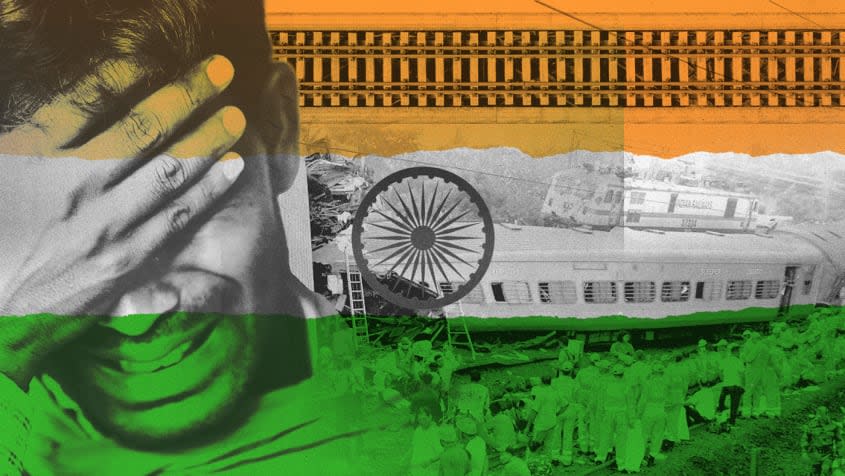Why does India have so many train crashes?

- Oops!Something went wrong.Please try again later.
India was stricken by a three-way train crash in the state of Odisha that killed nearly 300 people and injured more than 1,000. The accident, which investigators blamed on a faulty train signal, was one of the deadliest rail disasters in the country's history. Rescue workers and first responders described scenes of chaos as they searched through derailed train cars filled with dead bodies.
While Indian Prime Minister Narendra Modi has pledged to hold those responsible for the crash accountable, the Odisha accident is the latest in a neverending series of train accidents in India. In 2021, more than 16,000 people were killed in nearly 18,000 rail accidents across India, CNN reported. The deadliest accident is believed to have occurred in 1981, when a train plunged off a bridge in Bihar state, killing an estimated 800 people.
So why does India have so many rail accidents? The country has grappled with staggering death tolls from trains, and "despite government efforts to improve rail safety, several hundred accidents happen annually on India's railways," The Associated Press reported. Unless safety improvements are implemented nationwide, accidents are likely to continue, given that "trains remain an essential lifeline in India … carrying approximately 13 million passengers a day for work, family and leisure on trains that weave across 40,000 miles of track," The Guardian reported.
What are commentators saying?
Many train disasters in India are caused by derailments, with a government safety report from 2020 finding they were responsible for 70% of train crashes in the country. Part of the problem is India's sweltering heat, as "railway tracks undergo expansion during the summer months and contraction in winter due to the fluctuations in temperature," Soutik Biswas reported for BBC News. As a result, Indian railway tracks require constant inspection. This includes evaluations of "the structural and geometrical integrity of tracks … at least once every three months," he added.
Due to the large scope of the railway system in India, though, there are often shortfalls in these inspections, according to Biswas. A federal audit from 2017 found deficiencies "ranging from 30% to 100% in inspections." There have been talks of installing anti-collision devices on Indian trains, Biswas noted, but "the system is now only being installed on two major routes — between Delhi and Kolkata and between Delhi and Mumbai."
The nation's train system is also very old, built during British colonial rule in the 1870s. "The system is often criticized for being inefficient, overburdened and unsafe" as a result of its age, Juliet Perry and Medhavi Arora wrote for CNN in 2016, following another deadly crash. While there have been some safety enhancements since the 19th century, "the present system has outlived its utility" and needs a "generational change," former Indian rail minister Dinesh Trivedi told CNN.
This antiquated system is often cited as the main reason for India's high crash rate. "Pure operational failures are not uncommon on Indian railways," former railway official Subodh Jain told AFP, per The Japan Times. "Safety mechanisms are now far more robust, but it's a work in progress."
The rails have additionally been hindered by a longstanding lack of funding. The Indian trains system has "suffered from considerable underinvestment during the last years," and "investments in safety have also been insufficient," another former Indian rail minister, Suresh Prabhu, wrote.
What's next?
India has invested significantly in new (and safer) train cars, Alex Travelli reported for The New York Times. Travelli noted that, under Modi, India "has been polishing its long-ramshackle infrastructure as never before, and its railways … have been a prime beneficiary." India's rail budget "is five times as much this year than when [Modi] took office."
However, when it comes to India's already existing rail network, "its purse strings have been much tighter when it comes to ensuring the safety of those already racing along its tracks," Travelli added. There are still significant safety hurdles to overcome. The Indian government has implemented a reform system, including "accounting reforms … an independent regulator … [and] an asset monetization plan," Bibek Debroy reported for The Economic Times. But "given the legacy of decades of lack of reforms, the big-picture reform template cannot be delivered overnight and has to be incremental," Debroy added, and will likely take many more years to implement.
You may also like
How the Bible became conservative book bans' unintended target
Actors union SAG-AFTRA votes overwhelmingly to authorize strike

